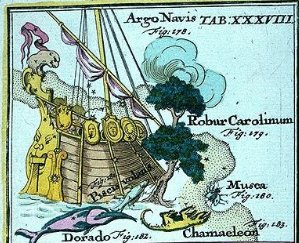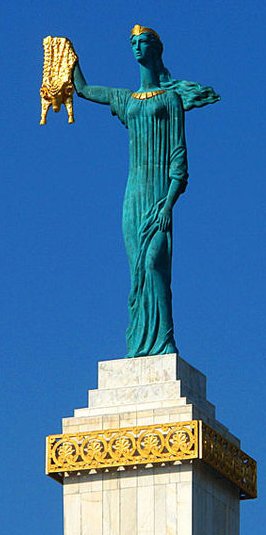In view of how in the G text a fish-hook evidently was used to illustrate the position of Sirius (instead of the position of the tail of the Scorpion), we can guess that glyph Ca5-14 was intended to refer to the Egyptian X (centered on the nose of Canis Major):
There is no similar glyph in the G text and there is no 'fish-hook' glyph in the C text. The G text seems to have began (if this term could be applied to a cyclical text) with heliacal Sirrah (the Navel of the Horse) at 0h (at the time of rongorongo), whereas the C text evidently began with Te Takapau (Sirrah) at the Full Moon - the nakshatra place corresponding to heliacal 0h. The name of the stone statue which was the first item to be brought onboard the ship of king Hotu (Full Moon) A Matua was, according to Manuscript E (p. 61), 'a cycle' (taka) 'finished' (pau).
... Teke said to Oti, 'When you see [ana ui mai koe] that Maeha is coming out of the house and is walking [oho ki vaenga] over to the yam plantation, then two [hokorua, 2] of you shall look around, enter [uru] into the house, and take [too] the stone figure (moai maea) that is lying there. (Her) name is Te Takapau.' ... In order to make sure that Ca5-14 indeed could be referring to the Egyptian X we can use my arrangement of glyphs in parallel with stars and dates. And then we can see that this X was placed at MAY 15 (*55) - alluding to May 15 (*55 = 135 - 80) when the Sun (at the epoch of rongorongo) rose together with Tau-ono (the first half of the Pleiades). The head of the following bird is ablaze like how in the 2nd half of the Pleiades the Queen of Sailing (Alcyone) rose together with the Sun in May 16. This was the beginning of the navigational (Naos) year. ... another Alcyone, daughter of Pleione, 'Queen of Sailing', by the oak-hero Atlas, was the mystical leader of the seven Pleiads. The heliacal rising of the Pleiads in May marked the beginning of the navigational year; their setting marked its end when (as Pliny notices in a passage about the halcyon) a remarkably cold North wind blows ...
And then we can guess that the 'severed feather branch' (Ca5-16) referred to what was lost from the ship (sacrificed) when the Argonauts rowed mightily between Scylla and Charybdis: ... In the description of the Babylonian zodiac given in the clay tablets known as the MUL.APIN, the constellation now known as Aries was the final station along the ecliptic. It was known as MULLÚ.ḪUN.GÁ, 'The Agrarian Worker'. The MUL.APIN is held to have been compiled in the 12th or 11th century BCE, but it reflects a tradition which takes the Pleiades as marking vernal equinox, which was the case with some precision at the beginning of the Middle Bronze Age (early 3rd millennium BCE). In later Babylonian tradition, the name of the constellation changes to MULUDU.NITÁ 'ram'. The motive for the name change is unknown. John H. Rogers suggests that the 'Agrarian Worker' became the 'Ram' via association with the legendary figure of Dumuzi the Shepherd. Gavin White suggests that the sumerogram LÚ 'man' may have come to be understood as Akkadian lu 'sheep'. Aries only rose to its prominent position as the leading sign of the zodiac in the Neo-Babylonian (7th century BCE) revision of the Babylonian zodiac, as Hamal (α Ari) came to be located close to the point of vernal equinox. In Hellenistic astrology, the constellation of Aries is associated with the golden ram of Greek mythology that rescued Phrixos on orders from Mercury, taking him to the land of Colchis. Phrixos sacrificed the ram to the gods and hung its skin in a temple, where it was known as the Golden Fleece. The Golden Fleece was then stolen by Jason and the Argonauts ... ... The Symplegades ... or Clashing Rocks, also known as the Cyanean Rocks, were, according to Greek mythology, a pair of rocks at the Bosphorus that clashed together randomly. They were defeated by Jason and the Argonauts, who would have been lost and killed by the rocks except for Phineus' advice. Jason let a dove fly between the rocks; it lost only its tail feathers. The Argonauts rowed mightily to get through and lost only part of the stern ornament. After that, the Symplegades stopped moving permanently ... ... The Argonauts, with the Golden Fleece on board, had to pass the Symplegades, the clashing rocks. Once a ship with its crew came through unharmed - so the 'blessed ones' (makaroi) had decided long ago - the Symplegades would stay fixed, and be clashing rocks no longer. After that 'accepting the novel laws of the fixed earth', they should 'offer an easy passage to all ships, once thay had learnt defeat'. This is only one station on the long 'opening travel' of the Argonauts transporting the Golden Fleece (of a ram), undertaken in all probability to introduce the Age of Aries, but it demonstrates best the relevant point, namely, 'the novel laws' ...
|
|||||||||||||||||||||||||||||||||||||||||||||||||||||||||||||||||||||||||||||||||||
.jpg)


